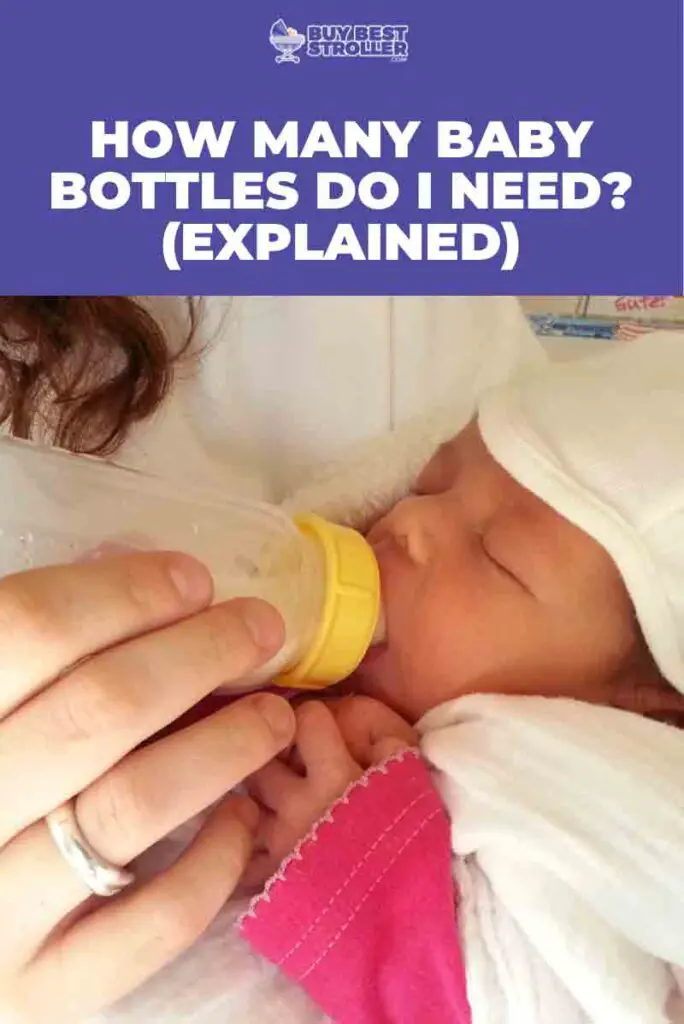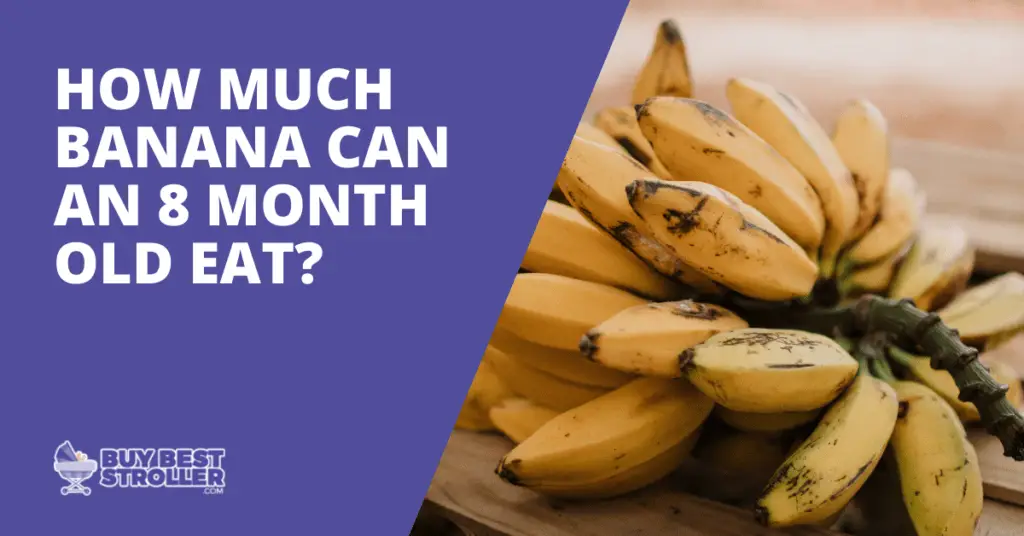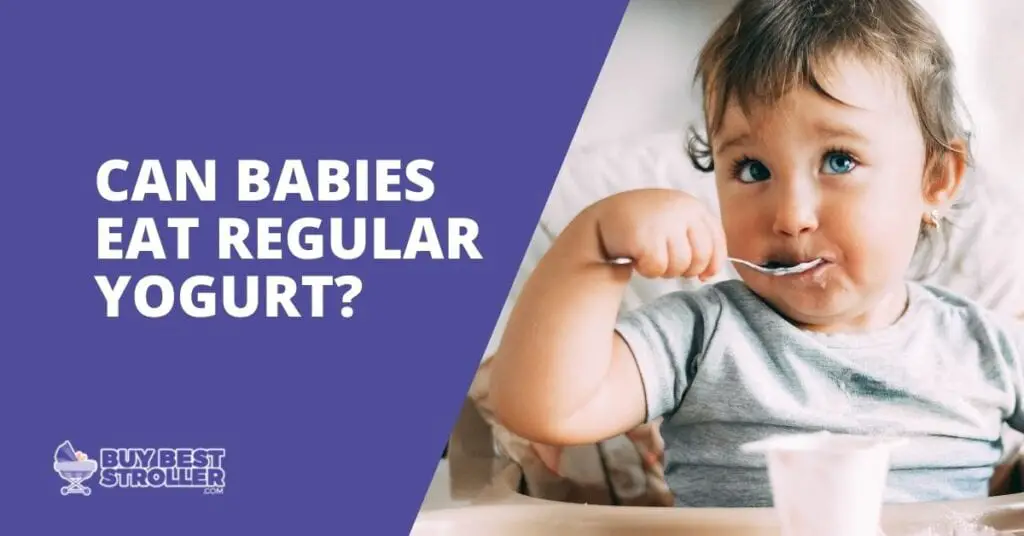How Many Baby Bottles Do I Need? As a new parent, you’ll be asking yourself this question when you’re ready to welcome a new baby to the family, especially if it’s your first.
In the US, roughly 86.4% of babies are bottle-fed after the six-month mark, according to the World Health Organization.
In this post my goal is to provide you with the most important information about baby bottles and nipples: how many bottles you actually need to buy, what type of bottles you should choose, and many others.
How Many Baby Bottles Do I Need? and Why?
It’s recommended to have at least 8 bottles on hand if your newborn is bottle-fed. It is important to remember that you won’t need them all at once. As the baby grows and their needs and appetites change, you will need to replace the baby bottles and nipples.
It’s true that how many bottles your baby needs depends on a lot of factors such as:
- Breastfeeding or bottle-feeding
- have a full-time job or are you a stay-at-home parent?
- What is the age of the baby?
First of all, the most important factor to consider is whether you are breastfeeding, bottle feeding, or using a combination of both. Obviously, it’s not necessary to buy 10 bottles if you’re breastfeeding your baby, but even in this case, it’s always good to keep a few bottles on hand just in case they’re needed.
4 to 5 bottles are usually sufficient if you are in this category.
On the other hand, many mothers decide to save their milk and then bottle-feed their babies, which means they will go through quite a few bottles each day.
It doesn’t matter whether you’re using baby formula or your milk to feed your baby, you’ll need to use multiple bottles in one day because you have to wash them immediately after feeding your baby.
In that case, you’ll need at least 6 bottles. As a rule of thumb, take a bottle every two or three hours.
If you are planning to bottle-feed your newborn, start with small bottles (4 oz) and get three or four. Small bottles are easier for the baby to hold. As well, newborns consume less milk than older babies. When your baby reaches 4 months, switch to an 8- or 9-ounce bottle. You may need 4-7 bigger bottles, depending on how long you plan to bottle-feed.
Now you got the answer to your question How Many Baby Bottles Do I Need? The next paragraph explains what else you should look into before buying them
What Are The Different Types Of Baby Bottles?
There are five different types of materials that are used in the manufacture of bottles.
There is a wide range of materials available, but glass and plastic are the most popular. Silicone, disposables, and stainless are less common and can be hard to find.
- Glass Baby Bottles
Glass bottles are easier to clean and are less likely to leave milk residue in the bottle. Furthermore, these bottles don’t contain any chemicals that are sometimes present in plastic baby bottles.
When using glass bottles around babies, you should be careful since it is breakable. If the bottle is damaged, you should throw it away.
Although glass bottles are more expensive than plastic or silicone bottles, when properly cared for, they can last for babies. While it is usually fine to microwave glass, you should never warm breastmilk in the microwave.
- Plastic Baby Bottles
The most popular material for baby bottles is probably plastic. Although plastic baby bottles have sparked controversy, most brands offer this type of bottle, and you can easily find them at low prices. Plastic bottles are lighter, won’t break if dropped, and cost less than bottles made of other materials.
Plastic bottles can warp and crack when heated repeatedly, so you will have to replace them more often. Additionally, people are often worried about BPA, the chemical used to harden plastics, which upsets the endocrine system of a baby. But don’t worry because the FDA banned BPA use in baby bottles and sippy cups in 2012. It’s always best to buy BPA-free bottles (and other things) for your baby.
- Silicone Baby Bottles
These bottles are great for babies because these bottles are lightweight, chemical-free, easy for them to grip, and they are see-through. However, the cost is prohibitive, and the choice is limited. Nevertheless, In recent years, silicone baby bottles have gained popularity as healthier and lighter alternatives to plastic bottles.
- Disposable Baby Bottles
The disposable bottle is actually a plastic bottle with a disposable, sterilized liner. Since the liners collapse as your baby drinks, they reduce gas and prevent colic. You can use them easily while traveling since they are so quick and convenient. The problem is that they are not eco-friendly, and they are not budget-friendly in the long run.
- Stainless Steel Baby Bottles
Stainless steel baby bottles are another lightweight and unbreakable option. Although these bottles are more expensive and replacement parts can be challenging to find, they will last for as long as your baby drinks from them.
It is easier to clean stainless steel than plastic and silicone baby bottles since they do not contain BPA.
How To Choose The Right Baby Bottle?
Before choosing the perfect bottle for your baby, you will need to consider many factors. Check out these factors when choosing a baby bottle.
Material
It doesn’t matter if you are using glass, plastic, stainless steel, or silicone, just make sure that it is free of BPA and phthalates. As previously mentioned, the material of the bottle plays an important role.
Size
It is not just important to choose the type of bottle, but also the size. Most bottles are available in two sizes:
Smaller-Sized Bottles: These bottles, which hold around 4 ounces of milk, are designed for newborns who consume less milk per feeding than older children.
Larger Sized Bottles: These bottles, which hold 8 ounces of breast milk or formula, are designed for older babies.
It is best to start with a smaller bottle, such as a 4 oz or 5 oz bottle. You can switch to a larger size when your baby grows and needs more milk or formula.
Shape
In terms of bottle shape, there are two types of bottles available on the market: standard and angled.
Typically, standard bottles are designed for feeding your baby lying down, such as cradled in your arms. Remember to always avoid feeding your baby flat on the ground. However, angled bottles are designed for semi-upright feeding and which helps to reduce gas and colic, as well as prevent ear infections.
Nipples:
A wide variety of baby bottle nipples are available on the market. In the same way, as bottles are different, nipples also come in different sizes, flow rates, materials, and designs.
Having bottle nipples is a crucial part of the feeding process, and your baby will let you know whether he/she is satisfied or not with your choice. Consider these factors:
Material: Nipple material is one of the most important factors to consider. Food-grade silicone is recommended due to its safety, flexibility, and durability. Ideally, it should be made from a high-grade silicone that is free from toxic chemicals.
Shape: Consider the nipple shape when choosing a bottle for your baby. Three different shapes are available. These are:
- Orthodontic – narrow at the middle and wide at the tip and base, so they fit better in the mouth.
- Ergonomic – similar in shape to a breast.
- Standard – tall and dome-shaped.
Furthermore, some other nipples are specially designed for babies with cleft palates and preemies.
Flow: Nipple flow rate is also a crucial aspect that should be considered when choosing a bottle. Nipple flow rate, or flow from a baby bottle, is defined as the amount of time it takes for milk to flow from it.
The following are a few additional points to consider when choosing a bottle:
- Make sure you select the same brand of bottle as your breast pump, so you can directly express milk into it.
- Choose bottles with wider necks because you can clean them more easily.
- Also, you can use disposable liner bottles. These bottles are easier to clean and milk never touches the bottle.
- When your baby has colic, try bottles with angled necks. Angled necks reduce gas formation.
- You should look for bottles that can change into sippers as your baby grows.
This post was done to answer the most common question for all new mothers, How Many Baby Bottles Do I Need?
How To Clean Baby Bottles?
When you use baby bottles, you don’t have to sterilize them every time. For the first few months, you can sanitize every day, but as your baby grows, you will only need to do it occasionally.
The CDC recommends that you sanitize your baby’s bottles daily if he or she was born prematurely, has a medical condition, or is less than 3 months old. It’s best to consult your pediatrician about this, depending on your baby’s health status.
It’s important to clean your baby’s bottles and nipples in a separate tub or basin (so they don’t touch the sink), using a baby bottle brush. You should thoroughly rinse them with warm water and let them air dry without using a towel.
You can also use the dishwasher with a special basket for all bottle parts.
How Long Do Baby Bottles Last?
Baby bottles made from stainless steel, silicone, or glass can last quite a while and only need replacing if they damage.
You need to take extra care with glass bottles since they are prone to chipping.
For plastic bottles, replace them every two to three months. Replace them immediately if they become damaged, discolored, or smell bad.
Make sure your bottle-feeding equipment is in good condition and working properly on a regular basis.
How Long Do Babies Use Bottles?
It is recommended that parents stop using bottles at 12 months, according to the American Academy of Pediatrics (AAP).
Babies who use bottles longer tend to skip meals and don’t get the nutrients they need from solid foods. It is a good idea to introduce your child to a cup before he or she turns one.
Often, babies become attached to their bottles, and taking them away can be a challenge. If your baby won’t let go of the bottle, make sure it’s not the bottle.
In addition to the bottle, offering your baby a cup will help him transition out of bottle feeding.
Related Topics :
- Do Babies Have Eyebrows When They Are Born?
- Baby Gasp For Air – When Should You Worry?
- How To Get Breastfed Baby To Sleep Longer – 7 New Tips




